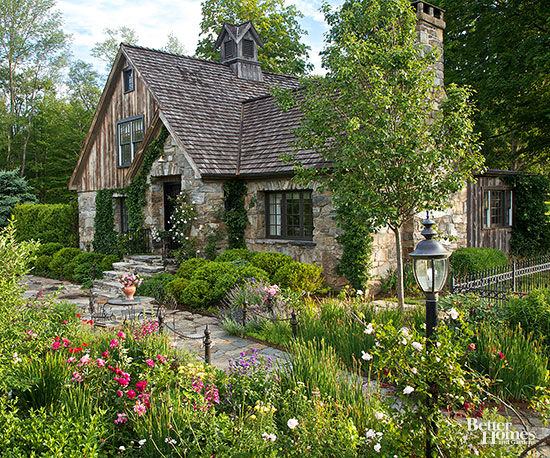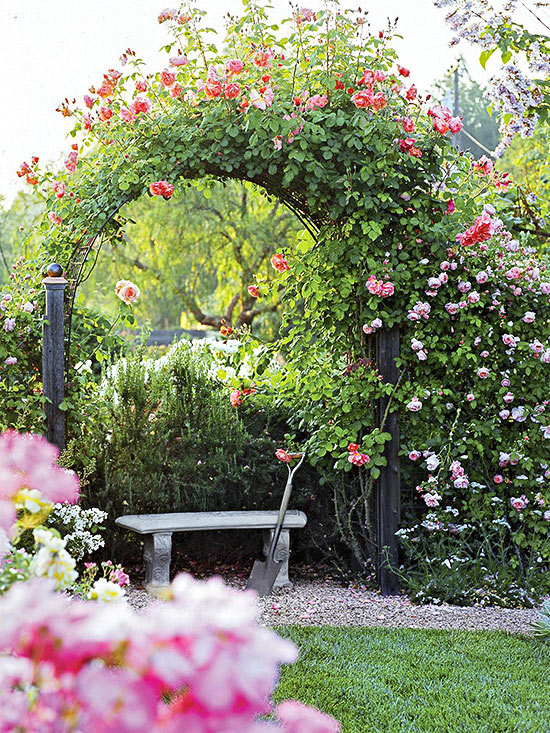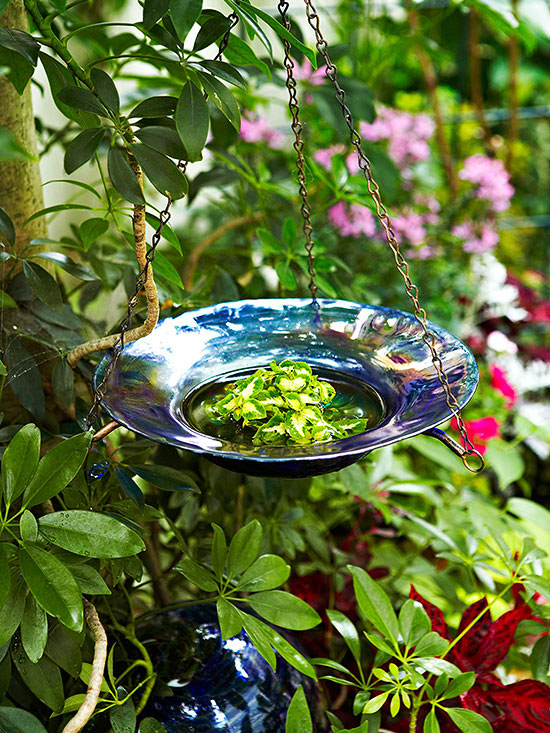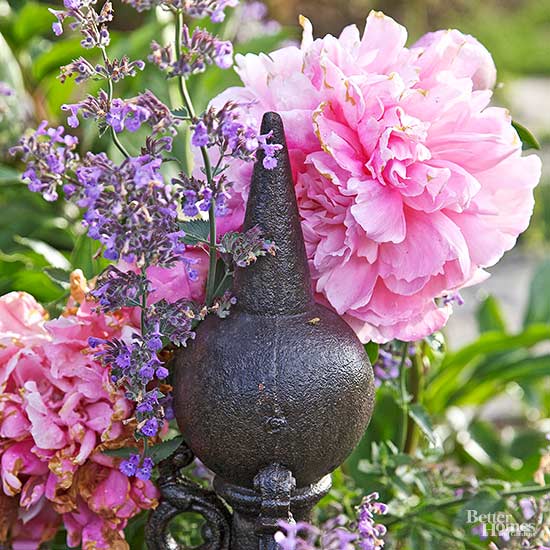






The Design
Formal gardens have a distinct tie with history, and cottage gardens do, too: They developed as a way for rural dwellers to grow herbs and vegetables they needed along with flowers they loved. Today, that happy mix-match remains, although most cottage gardens focus primarily on blooms -- particularly old-fashioned ones -- with a mass of flowers, rush of color, and sweet fragrance. Although not as rigorous with layout and geometry as formal gardens, cottage gardens have specific design elements, including paths that provide movement as well as access to plants and herbs for tending and harvest. Cottage garden pathways usually are made of natural and rustic materials such as stones, shredded-bark mulch, pine-needle mulch, or pea gravel. Edging may be included but isn't a necessity, and it may also be less formal, with field or river stones of varying sizes and colors placed to create a barrier between beds and paths.
continue reading belowThe Plants
Cottage gardens are all about big color, lush blooms, and lots of fragrance.

1. Hardscaping
With its seemingly "messy" flower approach, cottage gardens can pose a challenge for establishing a focal point. A good place to start is an arbor, which can also become a perfect support for plants such as roses, especially old-fashioned ones that are big and petal-packed. Climbing roses offer gorgeous blooms, a lovely scent, and ruby-red or orange rose hips in the fall. Fencing, especially a white picket fence, is another picturesque backdrop for blooms. Or try an unusual material such as wattle, a woven twig fencing popular in England. If you want to add walls, consider stone, either dry-stacked or mortared, for a more natural look. A common element of many cottage gardens is a potting shed as a focal point or anchor. The shed often has as much whimsy and delight as the garden, serving not only as a throwback to the tiny cottages from which this style was derived, but also as a spot from which to sit and enjoy the view.

2. Water Features
Take the same approach to water as you do to flowers in a cottage garden: Go rustic and simple. Use a bucket fountain or water bubbling up through an old millstone. Cottage gardens frequently feature in-ground or container water gardens that offer cool sips to birds and butterflies, such as this one hung from the branches of a tree. Other water features may include rustic stone troughs and decorative birdbaths.

The rule for accessories in a cottage garden is that there are no rules. Often the emphasis is on nature and wildlife, so many accessories feature these themes. Birdhouses and feeders offer housing and food. Bee skeps are frequently used as centerpieces, although they are ornamental and rarely attract bees. Found or repurposed objects often are used as ornaments. For example, a trio of long-handled tools can be made into a flower tepee. A barn cupola can become a focal point when placed in the center of a garden. If you find beauty in a rustic piece of statuary, an old garden sign, or an old piece of farm equipment, add it to your cottage garden.
Copyright © www.100flowers.win Botanic Garden All Rights Reserved